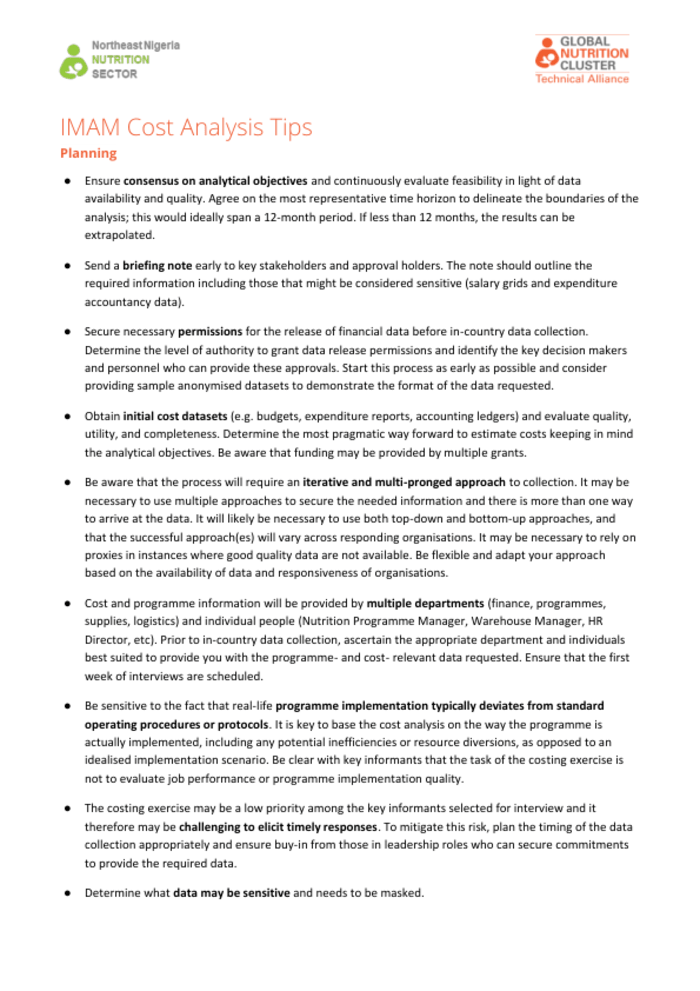
Ensure consensus on analytical objectives and continuously evaluate feasibility in light of data availability and quality. Agree on the most representative time horizon to delineate the boundaries of the analysis; this would ideally span a 12-month period. If less than 12 months, the results can be extrapolated.
Send a briefing note early to key stakeholders and approval holders. The note should outline the required information including those that might be considered sensitive (salary grids and expenditure accountancy data).
Secure necessary permissions for the release of financial data before in-country data collection.
Determine the level of authority to grant data release permissions and identify the key decision makers and personnel who can provide these approvals. Start this process as early as possible and consider providing sample anonymised datasets to demonstrate the format of the data requested.
Obtain initial cost datasets (e.g. budgets, expenditure reports, accounting ledgers) and evaluate quality, utility, and completeness. Determine the most pragmatic way forward to estimate costs keeping in mind the analytical objectives. Be aware that funding may be provided by multiple grants.
Be aware that the process will require an iterative and multi-pronged approach to collection. It may be necessary to use multiple approaches to secure the needed information and there is more than one way to arrive at the data. It will likely be necessary to use both top-down and bottom-up approaches, and that the successful approach(es) will vary across responding organisations. It may be necessary to rely on proxies in instances where good quality data are not available. Be flexible and adapt your approach based on the availability of data and responsiveness of organisations.
Cost and programme information will be provided by multiple departments (finance, programmes, supplies, logistics) and individual people (Nutrition Programme Manager, Warehouse Manager, HR Director, etc). Prior to in-country data collection, ascertain the appropriate department and individuals best suited to provide you with the programme- and cost-relevant data requested. Ensure that the first week of interviews are scheduled.
Be sensitive to the fact that real-life programme implementation typically deviates from standard operating procedures or protocols. It is key to base the cost analysis on the way the programme is actually implemented, including any potential inefficiencies or resource diversions, as opposed to an idealised implementation scenario. Be clear with key informants that the task of the costing exercise is not to evaluate job performance or programme implementation quality.
The costing exercise may be a low priority among the key informants selected for interview and it therefore may be challenging to elicit timely responses. To mitigate this risk, plan the timing of the data collection appropriately and ensure buy-in from those in leadership roles who can secure commitments to provide the required data.
Determine what data may be sensitive and needs to be masked.
